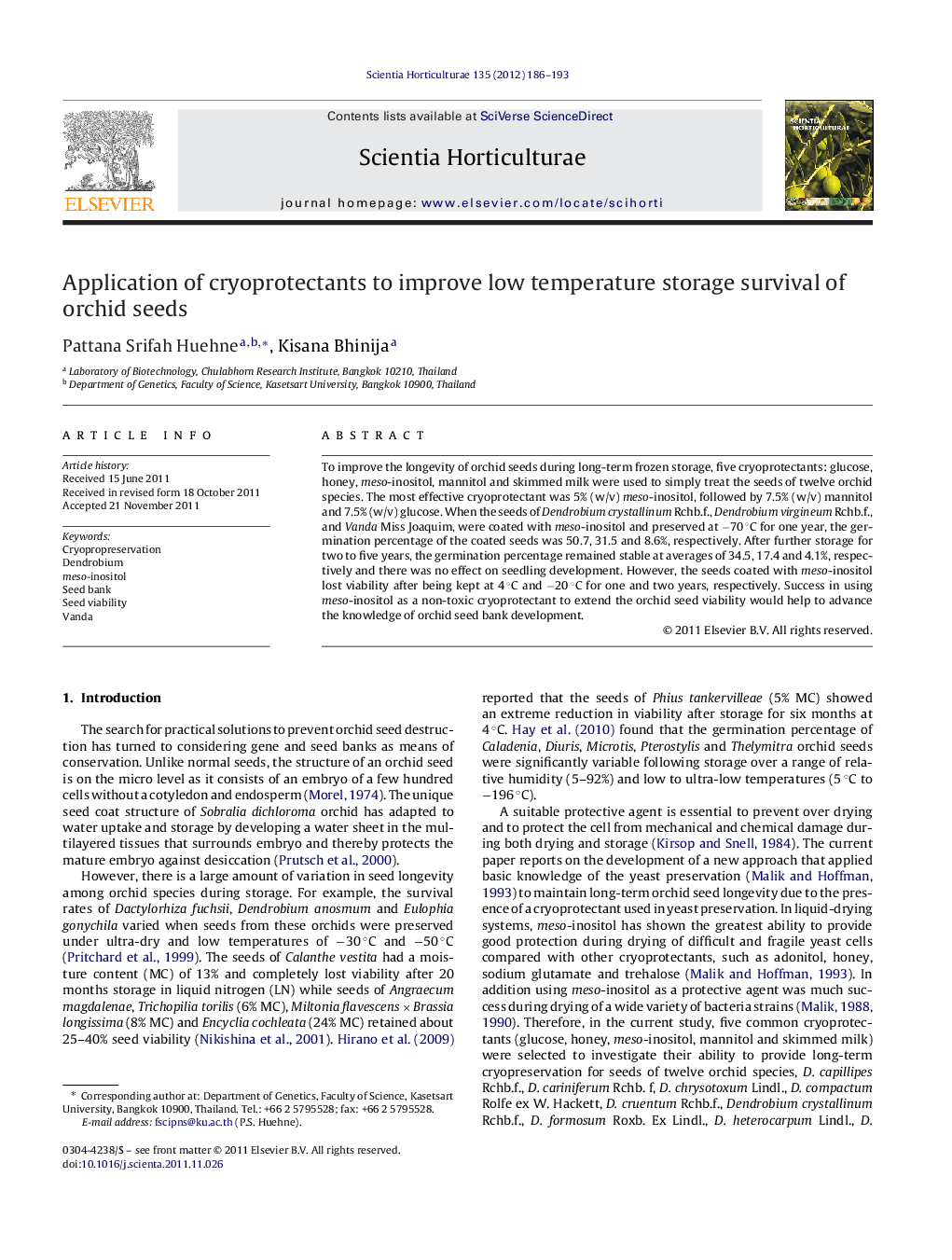| Article ID | Journal | Published Year | Pages | File Type |
|---|---|---|---|---|
| 4567842 | Scientia Horticulturae | 2012 | 8 Pages |
To improve the longevity of orchid seeds during long-term frozen storage, five cryoprotectants: glucose, honey, meso-inositol, mannitol and skimmed milk were used to simply treat the seeds of twelve orchid species. The most effective cryoprotectant was 5% (w/v) meso-inositol, followed by 7.5% (w/v) mannitol and 7.5% (w/v) glucose. When the seeds of Dendrobium crystallinum Rchb.f., Dendrobium virgineum Rchb.f., and Vanda Miss Joaquim, were coated with meso-inositol and preserved at −70 °C for one year, the germination percentage of the coated seeds was 50.7, 31.5 and 8.6%, respectively. After further storage for two to five years, the germination percentage remained stable at averages of 34.5, 17.4 and 4.1%, respectively and there was no effect on seedling development. However, the seeds coated with meso-inositol lost viability after being kept at 4 °C and −20 °C for one and two years, respectively. Success in using meso-inositol as a non-toxic cryoprotectant to extend the orchid seed viability would help to advance the knowledge of orchid seed bank development.
► First report on the most effective agent, meso-inositol (sugar alcohol), could prolong the viability of orchid seeds stored at −70 °C. ► The simplified method described in this paper would be a practical and economical method to the conservation plan for the rare orchid species. ► Different seed sizes and viability of twelve species of epiphytic, semi-epiphytic, terrestrial and semi-terrestrial orchids were examined.
